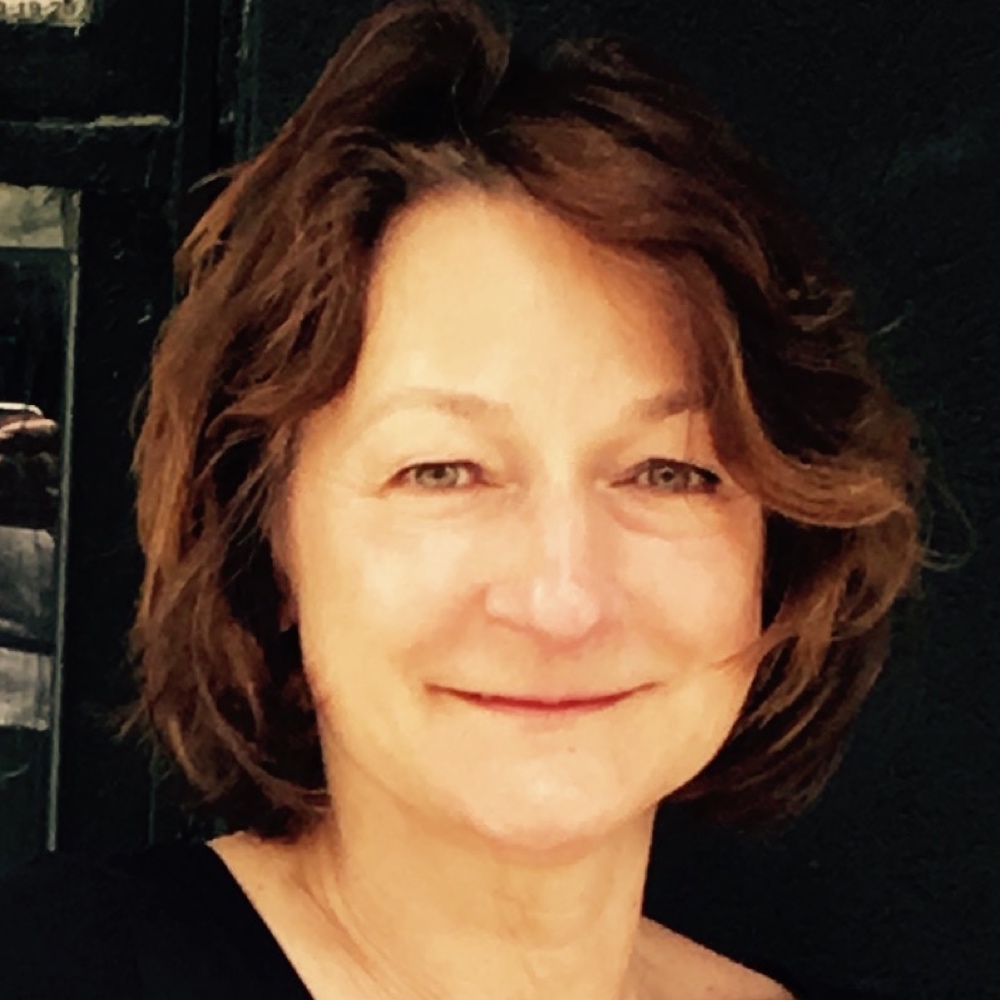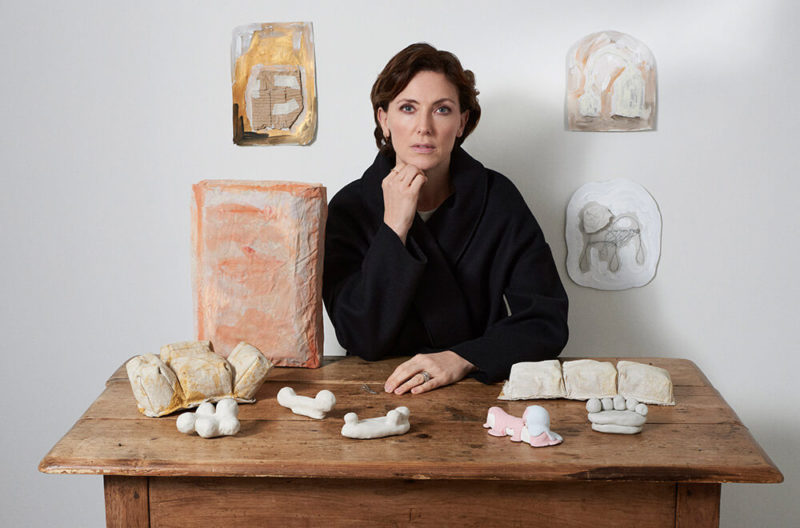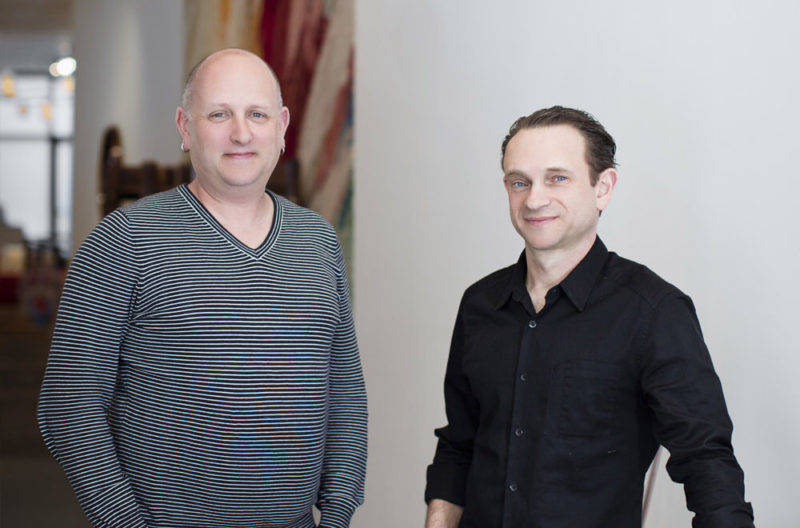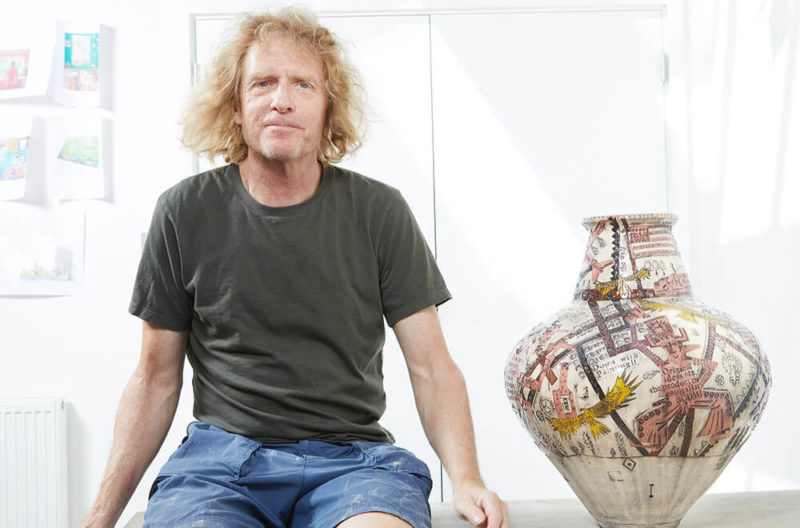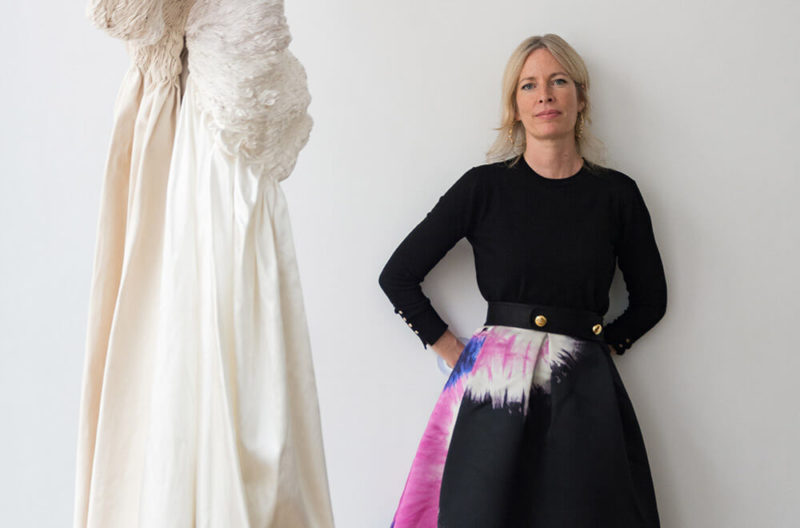The Haas Brothers
Witty, fantastical and exquisitely executed, the Haas Brothers' designs keep breaking boundaries.

The Haas Brothers
COURTESY: R & Company / PHOTOGRAPH: Joe Kramm
“YOU NEED TO keep an eye out for the new cartoon we’re developing,” says Simon Haas, one half with twin Nikolai of the now-famous Haas Brothers. “It’s called Filthy Animals – and it is pretty filthy!” Coming from the duo that has, in the past, brought the world 7ft tall lights shaped like penises, it’s not hard to believe that the animation will be hardcore, even though its main character is a suburban 12-year-old called Sunny Day (to be voiced by Rashida Jones). “It’s a 2D animation based on Niki’s illustration style,” says their colleague Johnny Smith, who’s working on the project that will be available sometime in 2021. “It’s a sci-fi adult comedy with heart.”
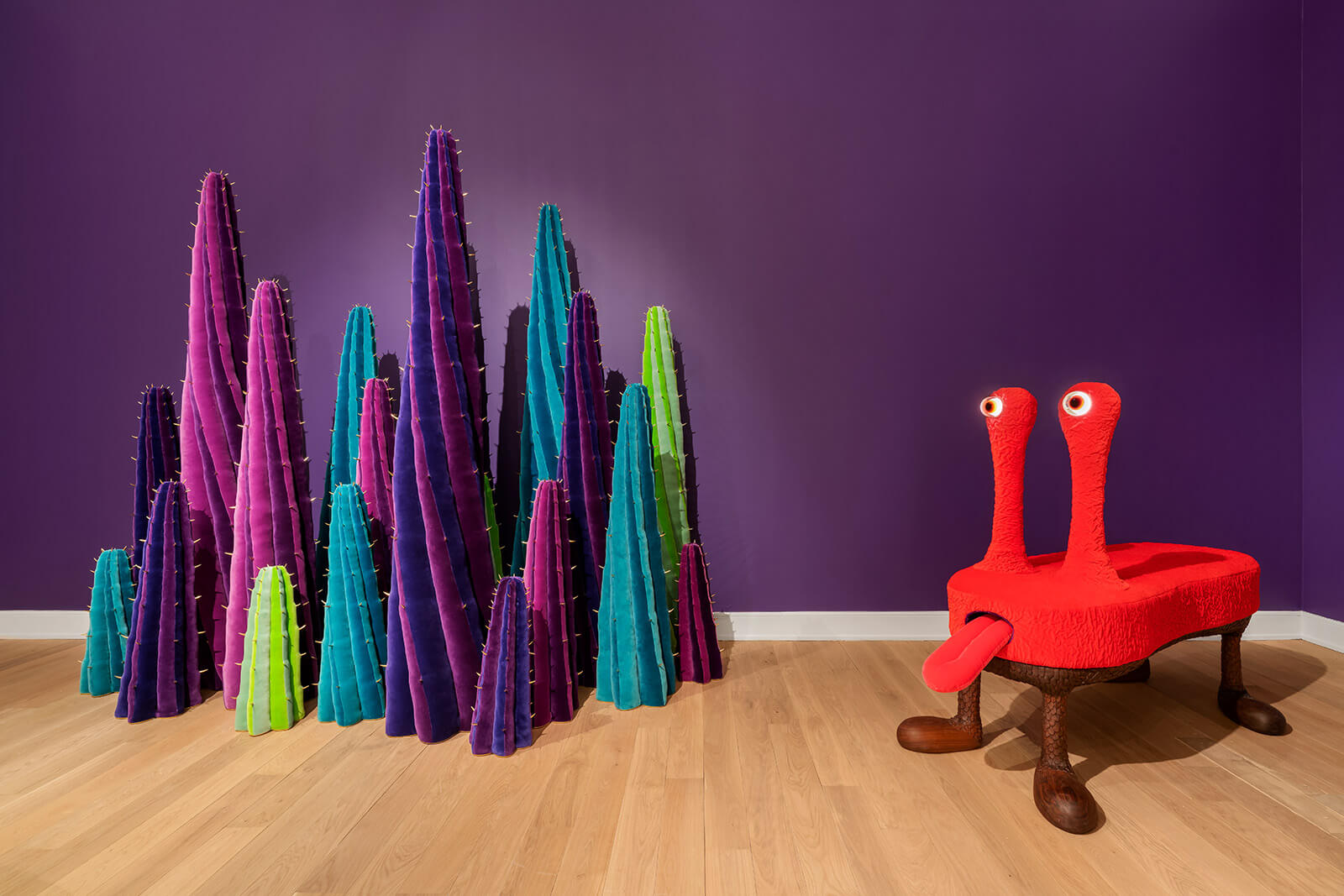
Installation view, Ferngully exhibition, 2018
COURTESY: The Bass Museum
There’s nothing surprising about the brothers slipping into film. Their practice has happily rambled across a range of media since they officially established their studio in 2010 – ceramics bristling with fine porcelain quills, furniture like furry animals, lighting with fungus-shaped shades and socotran-shaped bases, beaded toys, tableware and music are all strictly on limits. And then there’s the fact that they are very much in and of Los Angeles: their first client was Tobey Maguire; their original backer was Leonardo DiCaprio; and their slightly older brother Lukas is an actor (his breakout role was in the Amish thriller Witness when he was just nine years old, and he’s widely considered to be the model for the lead character in Entourage). “I think he’s quite surprised that Niki and I are getting quite well known too,” Simon told me last year, at a dinner during Frieze that was hosted for the pair at 5 Carlos Place, “Ours didn’t look like the starry type of profession.”
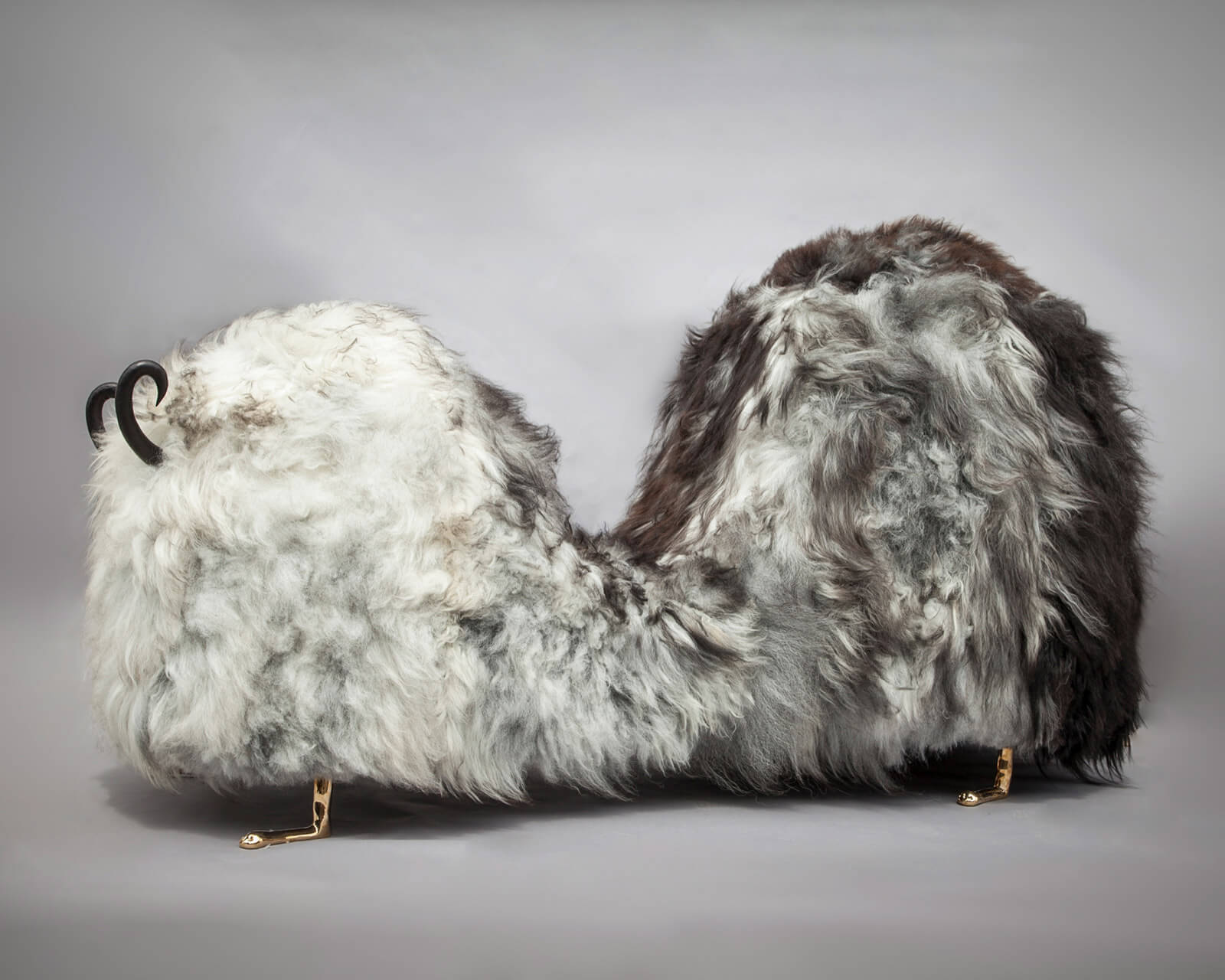
The Haas Brothers, ‘Hairy J. Bilge’, 2014
COURTESY: R & Company / PHOTOGRAPH: Joe Kramm
The Haas Brothers’ rise has been swift, driven by a perfectly-tuned combination of charm, talent and sheer nerve. “They have a confident way about them,” says Evan Snyderman of R & Company, the New York gallery they have worked with since 2012, “But with it comes intelligence and they are open and honest and free. It really draws you in. There’s no pretension, but they see no reason to shy away from commenting on society, gender or sex. It’s just who they are.” Their first showing in New York was a series of bronze vases, called ‘Hematite’, which looked like enlarged caterpillars, or perhaps another tumescent object, depending on your point of view. “They’d poured plaster into pantyhose to make them,” says Snyderman. “We sold them for about $800.” Collectors including Beth Rudin DeWoody and Jeanne Greenburg snapped them up.
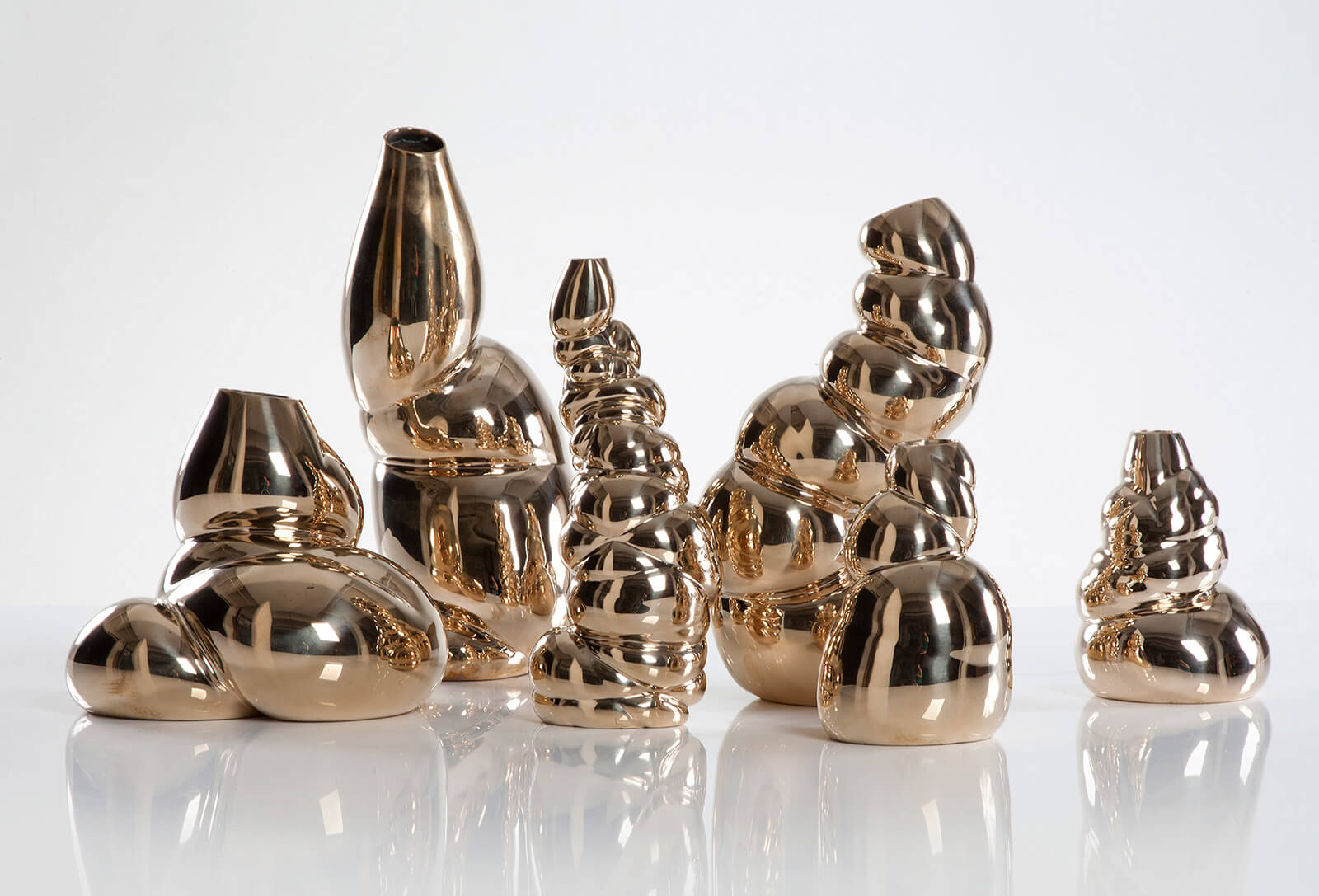
The Haas Brothers, ‘Hematite Vases’, 2012
COURTESY: R & Company / PHOTOGRAPH: Joe Kramm
The appeal of their work lies in its curious ability to mingle the erotic, the cartoonish, the beauty of the natural world, science fiction and sexual fantasy, in objects that exhibit the finest craftsmanship – that are are simultaneously recognisable and yet completely alien. “There was a lot of push back at first from design people, who thought the work was kitsch and childish,” says Snyderman. “But there are messages and stories in every single piece. It’s conceptual work, and it’s about both poking fun and creating commentary.”
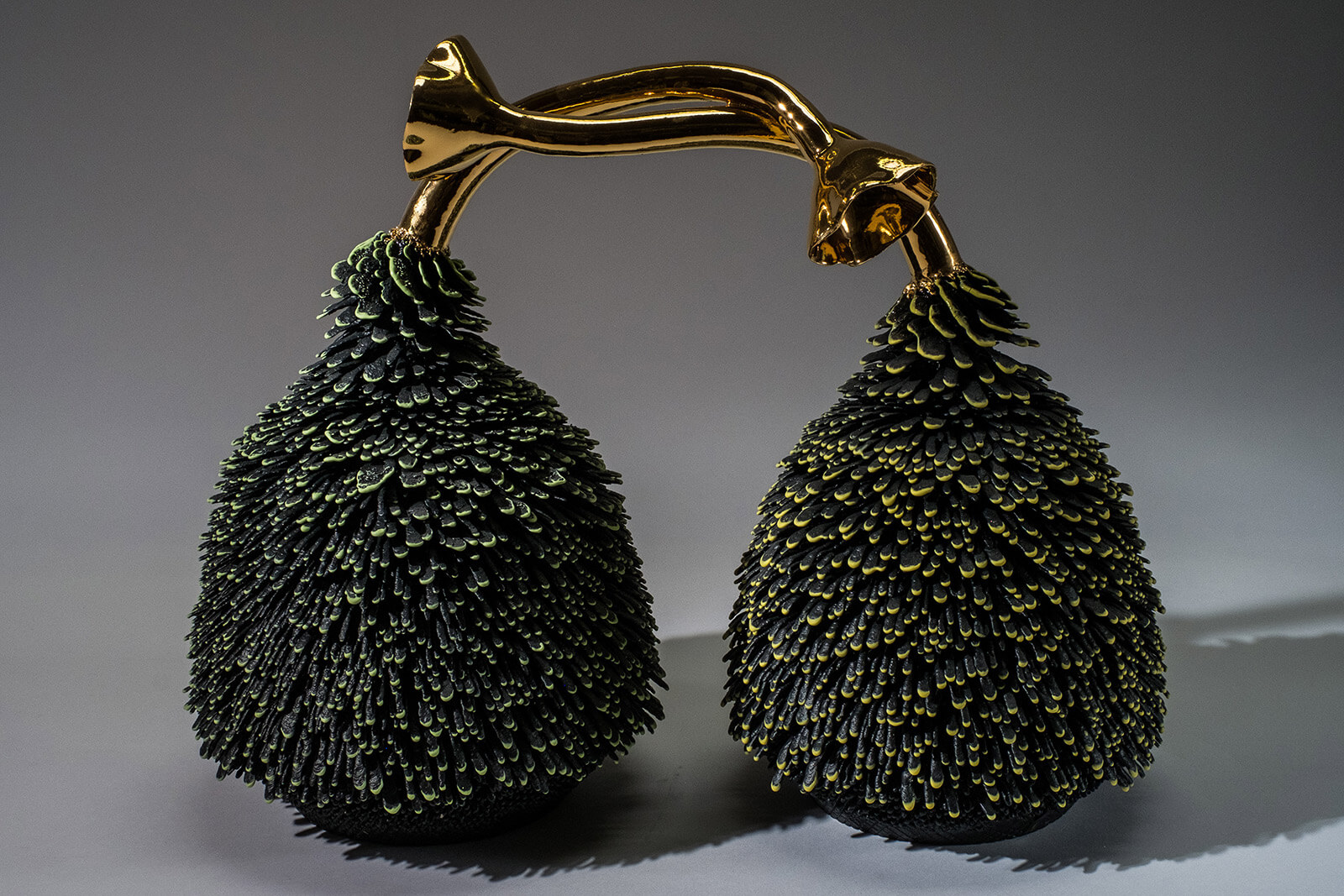
The Haas Brothers, ‘Father Partners Accretion’, 2018
COURTESY: The Haas Brothers / PHOTOGRAPH: Justin Corbett
By 2018, they had also been taken on by the prestigious contemporary art dealer Marianne Boesky, who runs spaces in New York and Aspen. “I met them at a party in Aspen during Artcrush [the Aspen Museum of Art’s annual fundraiser],” says senior director Kelly Woods, “and they were just magical people. I didn’t know the work then, now I do. It’s the way they are equally drawn to a range of materials, as to fantasy, that is special and allows them to cross divides. Look at a ‘Beast’ piece – it could be a stool, it could be a sculpture, it can live in both places,” she continues, referring to the animal-like furniture they’ve made since 2013, pieces which have no heads or faces yet appear to be disconcertingly alive. Once using thick shaggy animal skins, such as Icelandic sheepskin, both twins have since moved to fake fur. “We weren’t early adopters of the no-fur movement,” admits Simon, “we grew up in Texas where taxidermy is commonplace and fur seemed like a normal craft material. But we figured it out eventually. Fake fur is such a technological marvel, it’s really exciting to work with it.”
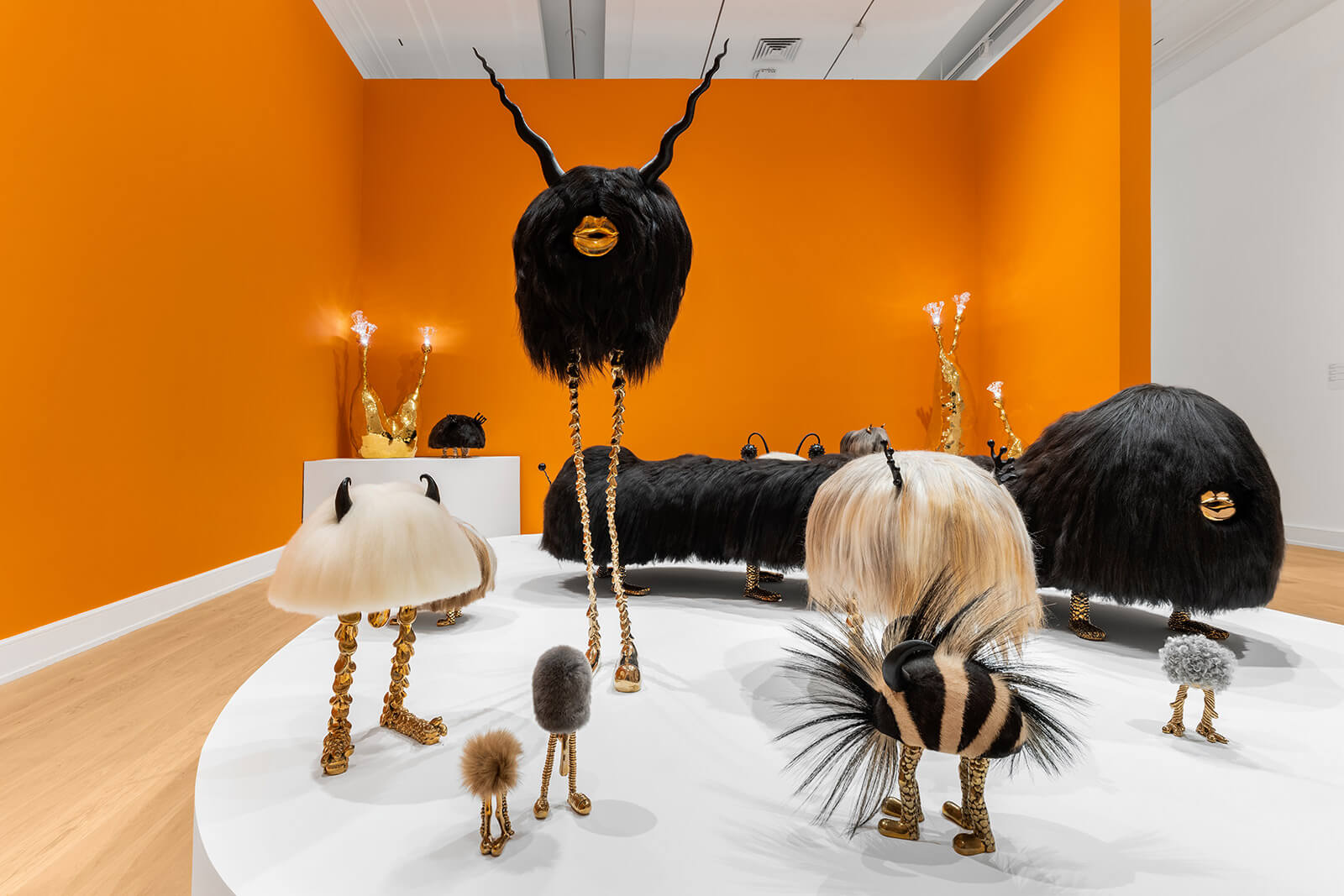
Installation view, Ferngully exhibition, 2018
COURTESY: The Bass Museum
NIKOLAI AND SIMON Haas were born in Santa Monica in 1984, but grew up in Austin, Texas in an artistic family. Their father Berthold is a sculptor; their mother Emily Tracy is an actress/writer/opera singer. “She stood up and sang ‘You are so beautiful to me’ in the style of Tom Waits at their first solo show in New York,” says Kelly Woods. As twins – one straight, one gay – they seem as close as they are non-identical. “I was a hockey player and a musician,” says Niki, who toured with Vincent Gallo’s band RRIICCEE, while Simon studied fine art at Rhode Island School of Design.
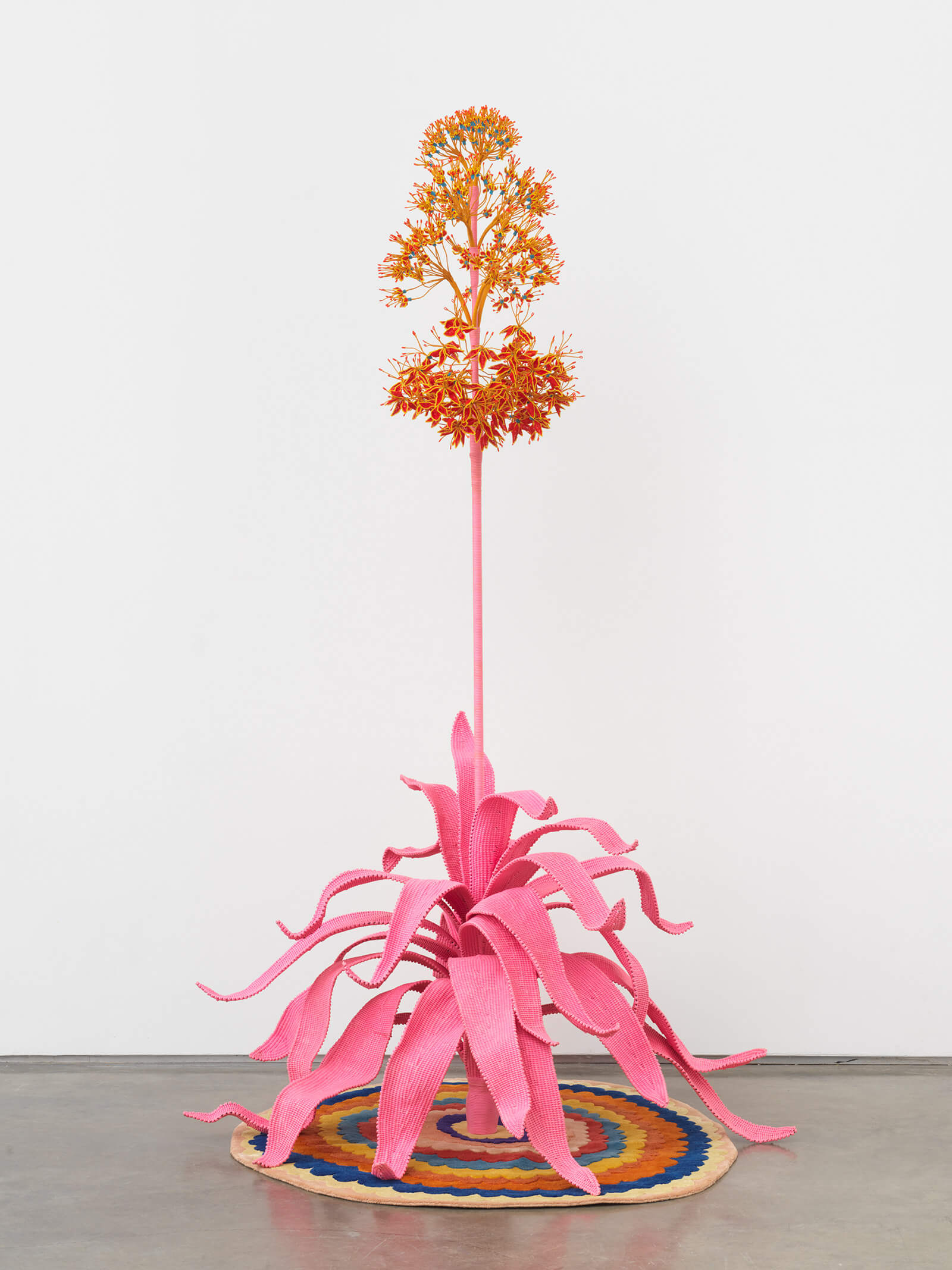
The Haas Brothers and Haas Sisters of Lost Hills, ‘Centurihanna’, 2019
COURTESY: Marianne Boesky Gallery / PHOTOGRAPH: Object Studies
“There are messages and stories in every piece …”
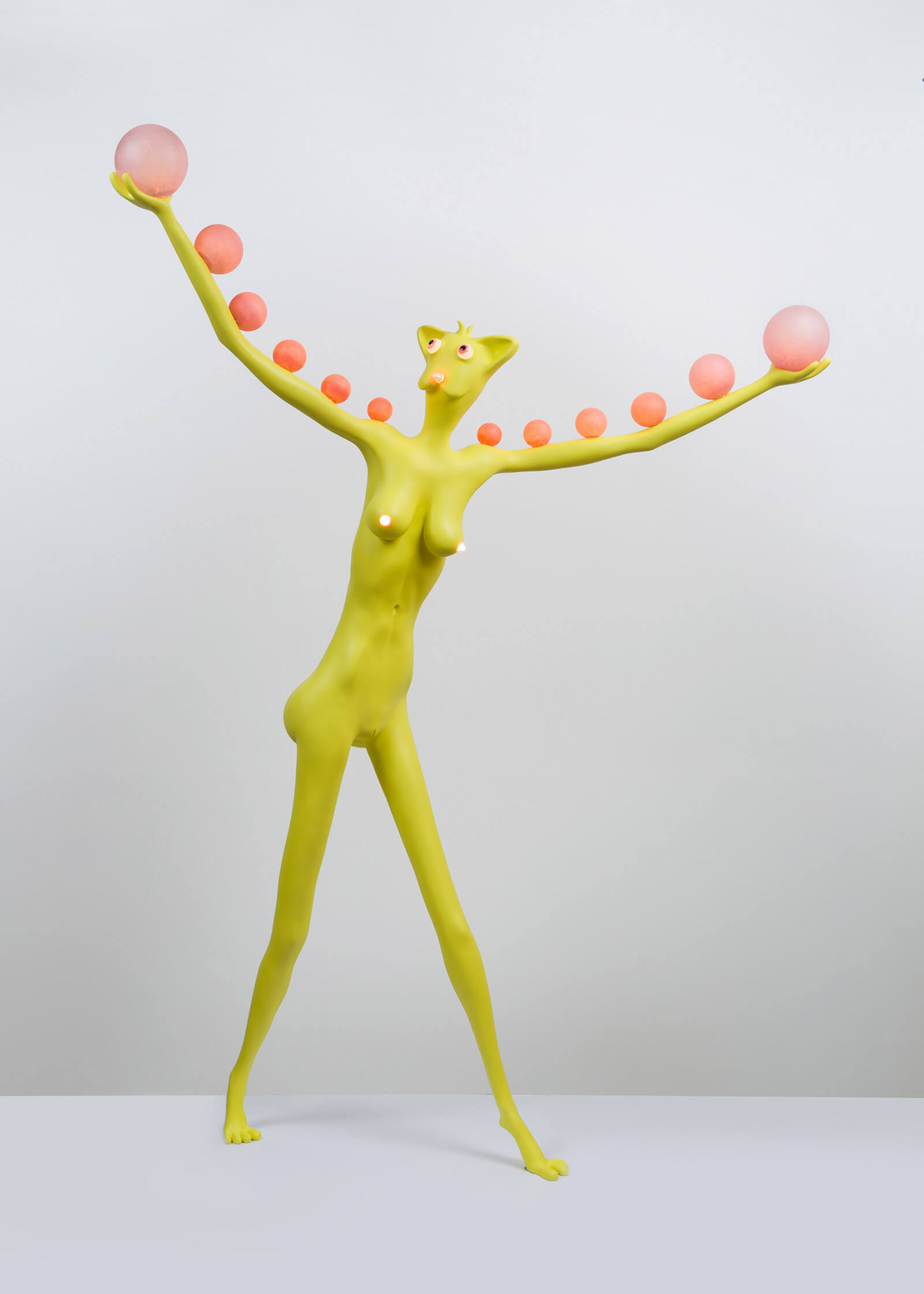
The Haas Brothers, ‘Caturday Night Fever’, 2020
COURTESY: The Haas Brothers / PHOTOGRAPH: Ian Byers-Gamber
“… it’s about both poking fun and creating commentary”
“Growing up gay in Texas coloured my view. It was only when I got to LA that I realised how much shame had played a part,” says Simon, “and I wanted to bring the conversation right out into the open – to crusade against shame. It just happened that we chose the medium of design and objects to do that, as our father had taught us how to make things from an early age.” “For me,” says Niki, “it was about exploring something good, and real. There’s still sexuality in the work but I think we’ve become more spiritual. And I just venerate nature. With these things we create a fantasy inside our heads, a parallel universe.” They describe their division of labour as Simon’s analytical mind meeting Niki’s more fantastical one. “I’m a studier,” says Simon, “Niki’s animals and personalities.”
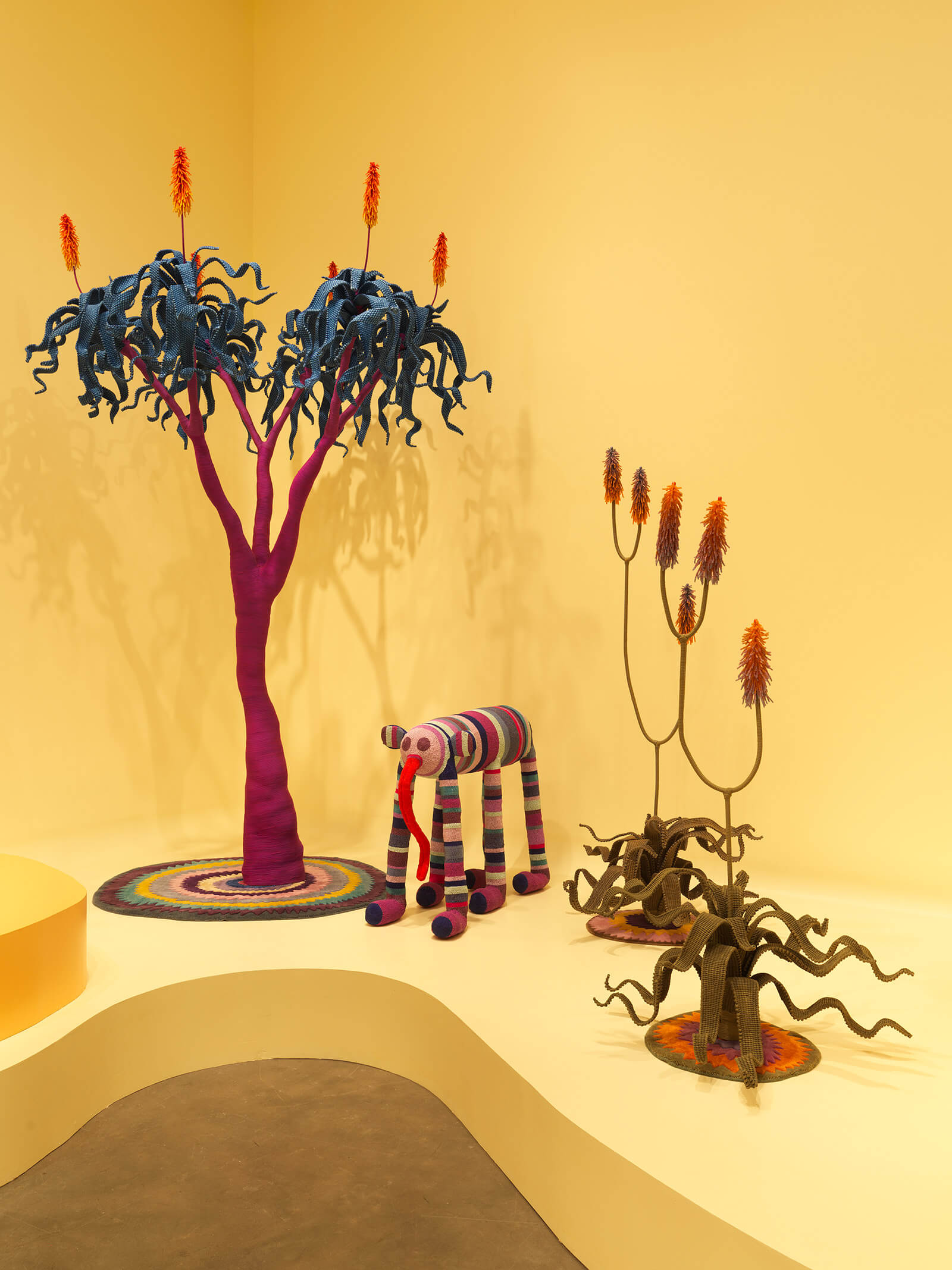
Installation view, Madonna exhibition, 2019
COURTESY: Marianne Boesky Gallery / PHOTOGRAPH: Object Studies
By 2010, the pair had set up studio in LA, and by 2011 Donatella Versace had tapped them to design a series of furniture which she presented at the Milan Furniture Fair. The combination of hairy hides and slender hoofed legs, clad in perfectly tessellated hexagonal bronze tiles, was a riotous union of rock ‘n roll and extreme craftsmanship. The following year, Lady Gaga had them make the little figures that appeared to be crawling all over her naked body for a perfume campaign shot by Steven Meisel.
While both art collectors and celebrities were amassing works with names like Hairy J. Blige and Rita Chaiseworth (both big hairy seats with dainty clawed bronze feet), a trip to South Africa in 2015 proved pivotal in several ways. First they discovered objects by local women beadworkers, whom they have now absorbed into their practice (they are known as the Haas Sisters); and secondly they had a huge row which led to a deep rethink about their relationship and what they could achieve with their increasing success. “We were having an emotional struggle,” says Simon, “and I realised I was falling apart.” “The most important thing was to work out how to use our privilege more constructively. We’re not just making pretty objects,” says Niki. The result was the genesis of the ‘Afreaks’ series – gleefully cartoonish and exuberantly coloured fantasy animals the size of small sheep – made by the Haas Sisters. “They represent the first time we tried to engage an outside community to make work with us,” says Niki.
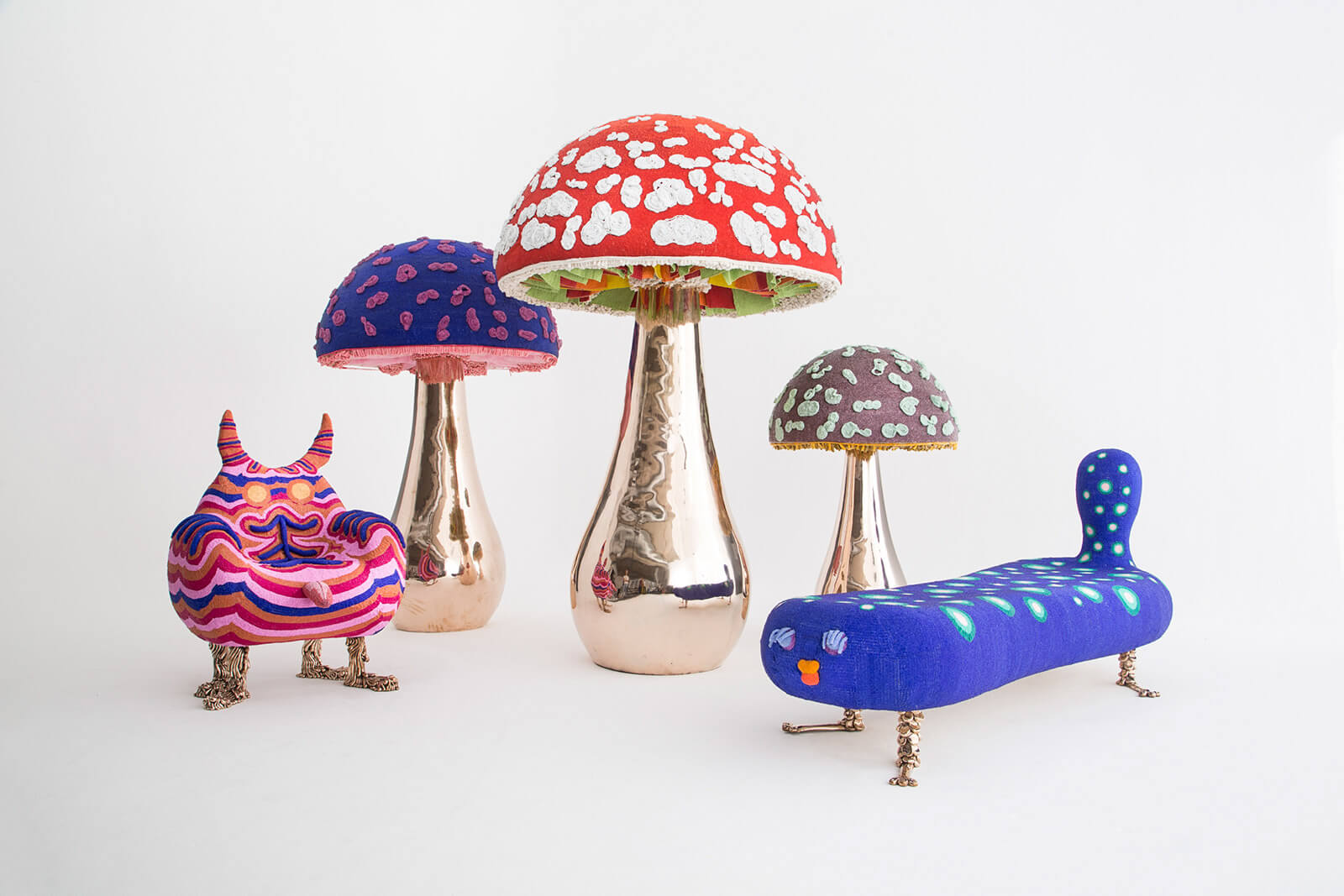
The Haas Brothers and Haas Sisters, ‘Afreaks’, 2016
COURTESY: R & Company / PHOTOGRAPH: Joe Kramm
Next, a chance meeting with Lynda Resnick, the pomegranate magnate, led to a new relationship with women living in the northern Californian farming community of Lost Hills, where female employment is almost non-existent. The skills they have taught the women enable them to support their families, while the first pieces to emerge from the project appeared at the Bass Museum in Miami in 2018 – in large-scale palm trees with copper fronds, glass beading and basket-woven trunks sitting on hand-tufted rugs. “I’m on a real kick exploring more ancient crafts,” said Simon at the time. “Sometimes I can get a bit over ‘luxury’.”
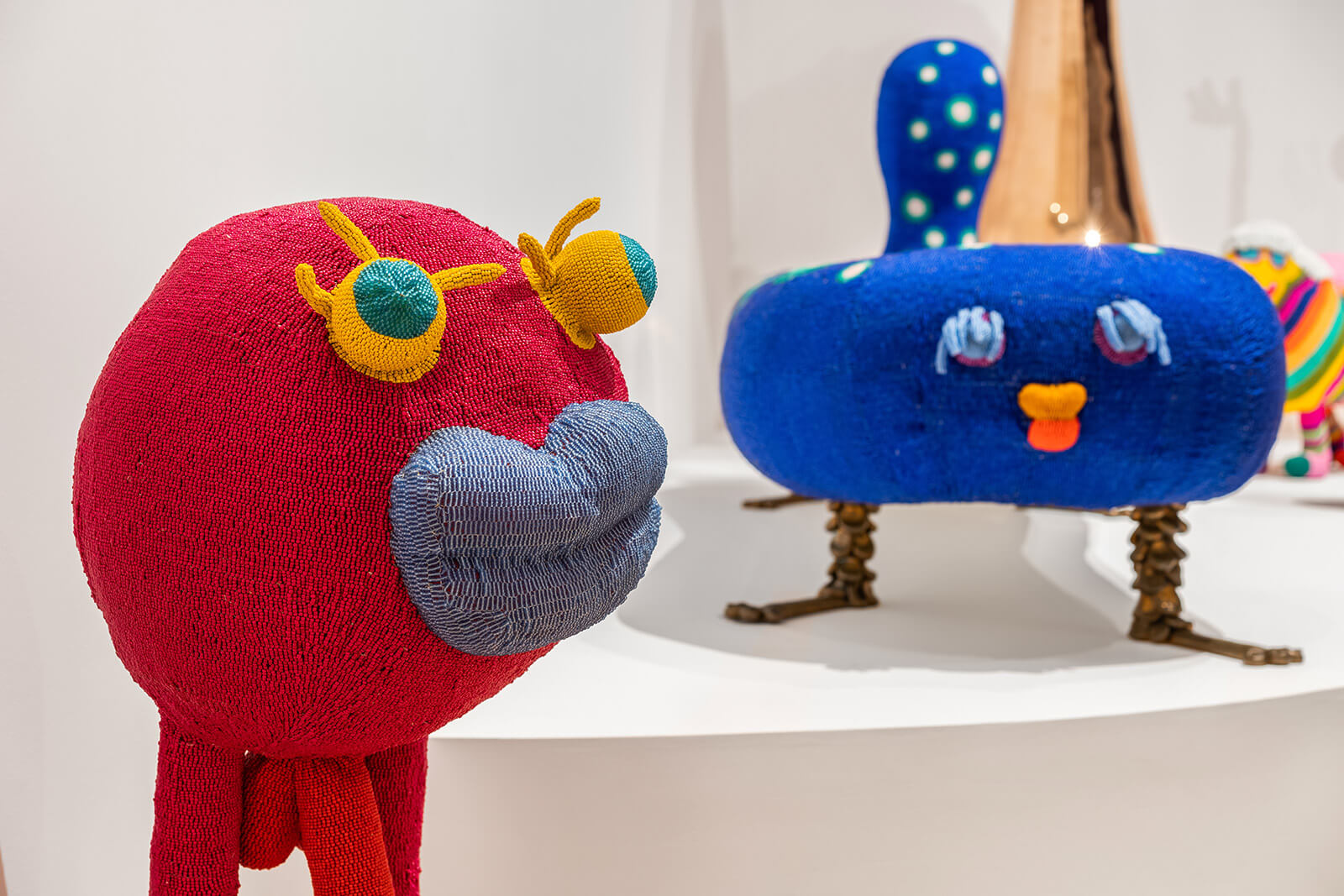
Installation view, Ferngully exhibition, 2018
COURTESY: The Bass Museum
At the same location, however, a room was given over to their work with L’Objet, the New York company that specialises in high end homewares. A central table offered a glittering array of finely crafted porcelain plates, gothic silver napkin rings, porcelain boxes in the form of freaky horned creatures, and mini beasts in 24 carat gold. Simultaneously they were working on a gold water pitcher for the Miami-based collector George Lindemann. “It will be encrusted with semi-precious jewels,” he said. “I’m going to enjoy its beauty every day.”
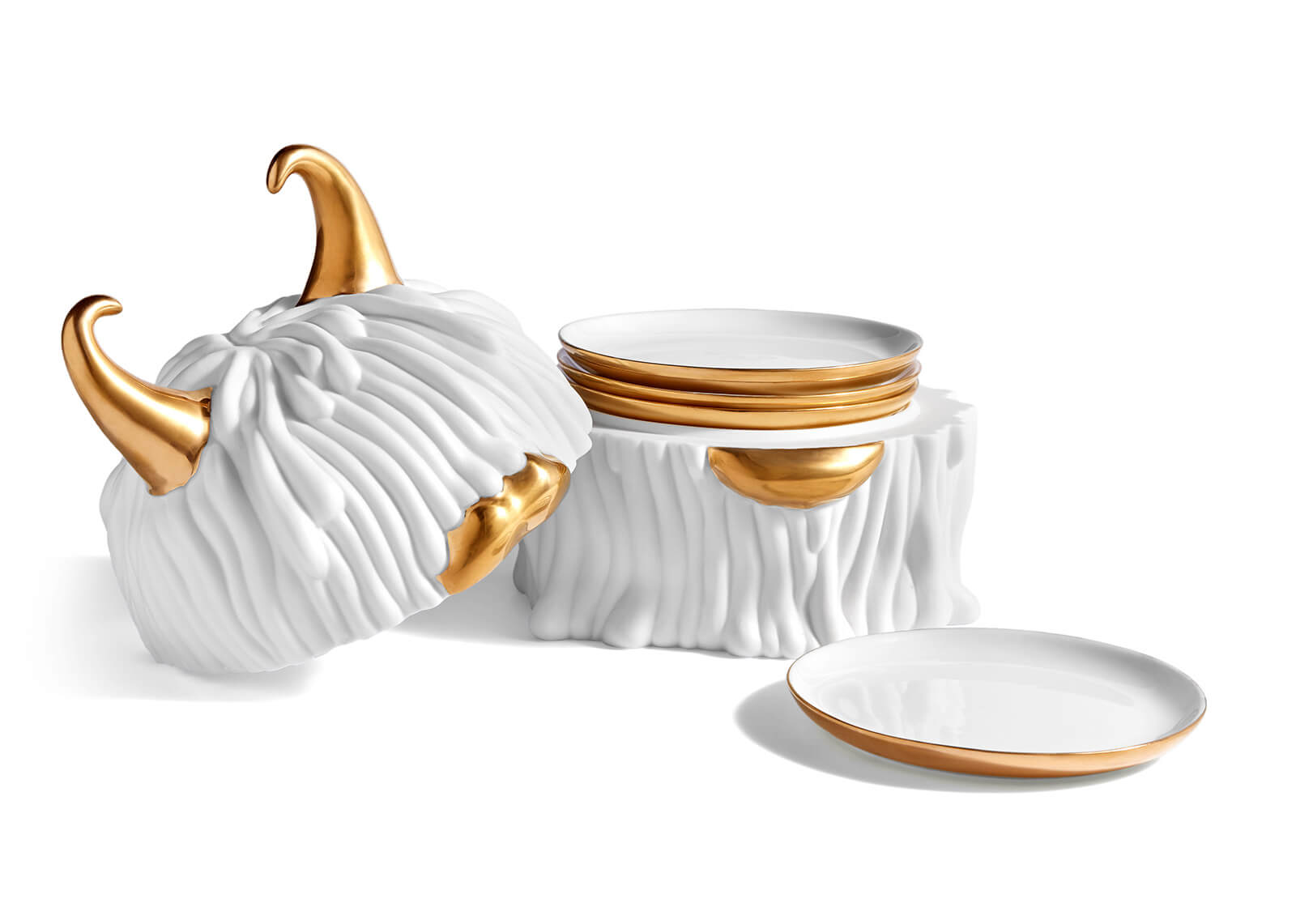
The Haas Brothers collaboration with L’Objet, ‘Lynda Box & Plates’, 2018
COURTESY: L’Objet
While many designers work from production to limited edition to one-off, few have crossed the art/design/craft divide quite so effortlessly. It is not unusual to find a piece of their finely wrought, organically shaped sculpture – each porcelain strand created by hand then dripped with liquid gold – on an art fair booth, while other limited-edition works are being shown at the design fair next door. “I haven’t yet found a collector who is either confused or bothered by it,” says Snyderman. “I think the artworld has changed. There used to be a real wall there – between art and design – but now the worlds are colliding and it’s a good thing for everyone.”
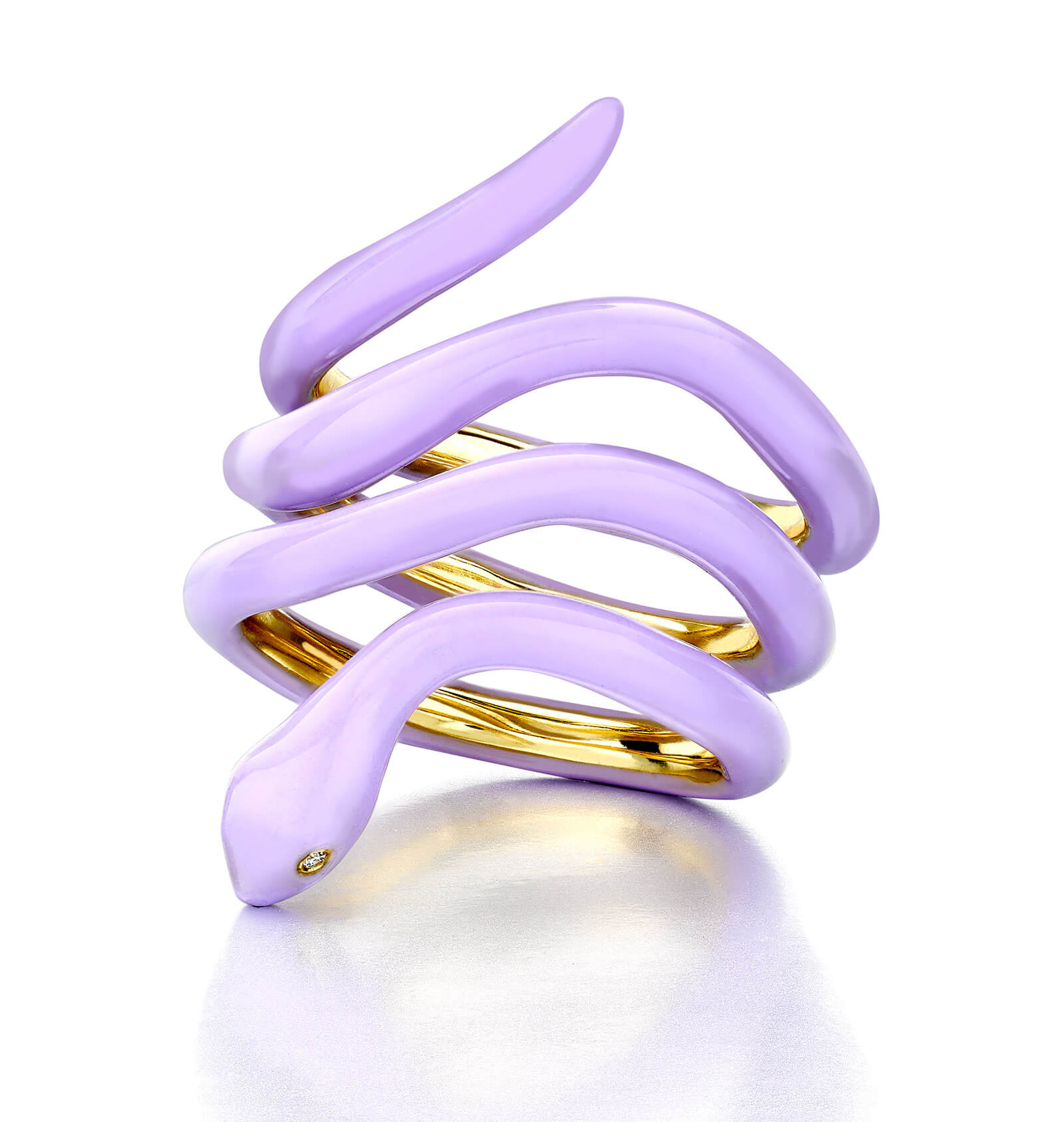
Jessica McCormack & Haas Brothers, ‘Large Snake Ring’,2020
COURTESY: Jessica McCormack
Earlier this year, the brothers acquired a new studio in Los Angeles, a vast space near Downtown which, over time, they intend to turn into a creative hub with some public access. In the meantime, it is where they are working with their 14-strong team on a series of upcoming exhibitions, as well as ‘Filthy Animals’ of course. A show opening in January 2021 at the SCAD Museum of Art will include, according to Kelly Woods, a huge mural and a menagerie of new animals. A new piece – a yellow catlike creature bedecked with lights called ‘Caturday Night Fever’ – was installed in a collector’s home last month. “It was meant to be for a fancy new bar/club,” says Johnny Smith, “but the owner liked it so much he decided to keep it for himself.” A jewellery collection, Jessica McCormack and Haas Brothers, made in collaboration with the New Zealand-born Jessica McCormack, which came together during lockdown, will launch internationally in November.
The pair have also set their sights on producing what could be a piece of public art. “Simon has been making insane renderings of a large-scale sculpture,” says Niki. But Snyderman sees even bigger things ahead. “Not that size is everything,” he laughs, “but I really think they could move to the scale of architecture.”
The Haas Brothers – American artists, noted for their sculptural works that blur the line between art and design.
R & Company – represent a distinguished group of 20th and 21st century designers, whose work is among the most innovative a finely crafted of their time.
SCAD Museum of Art – a premier contemporary art museum that features emerging and established international artists. It will feature a Haas Brothers exhibition from 21st January – July 11st 2021.
